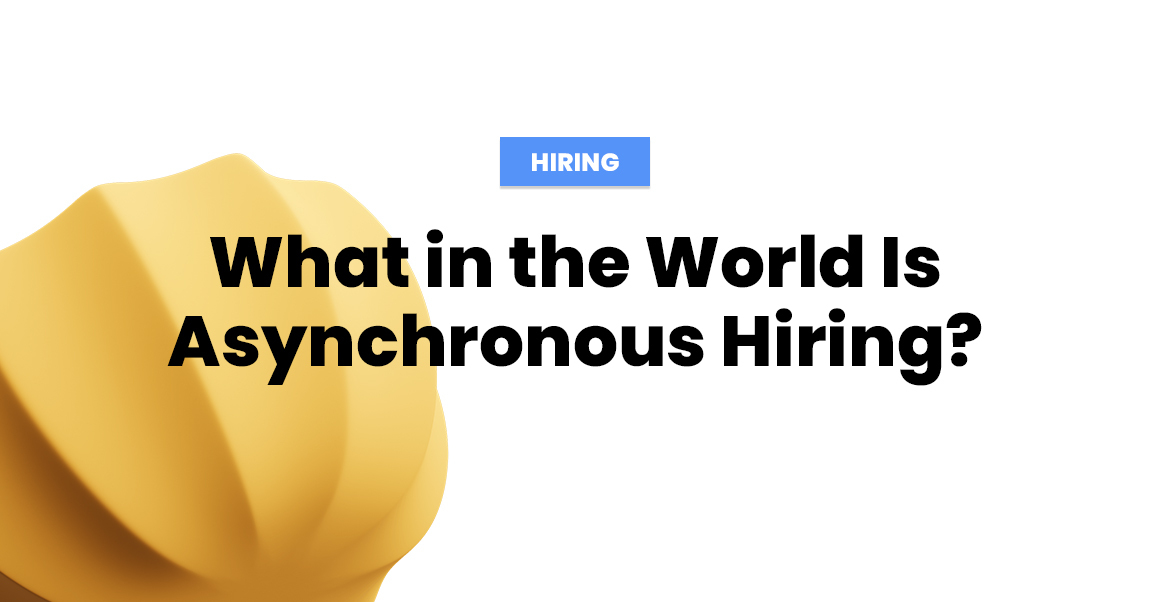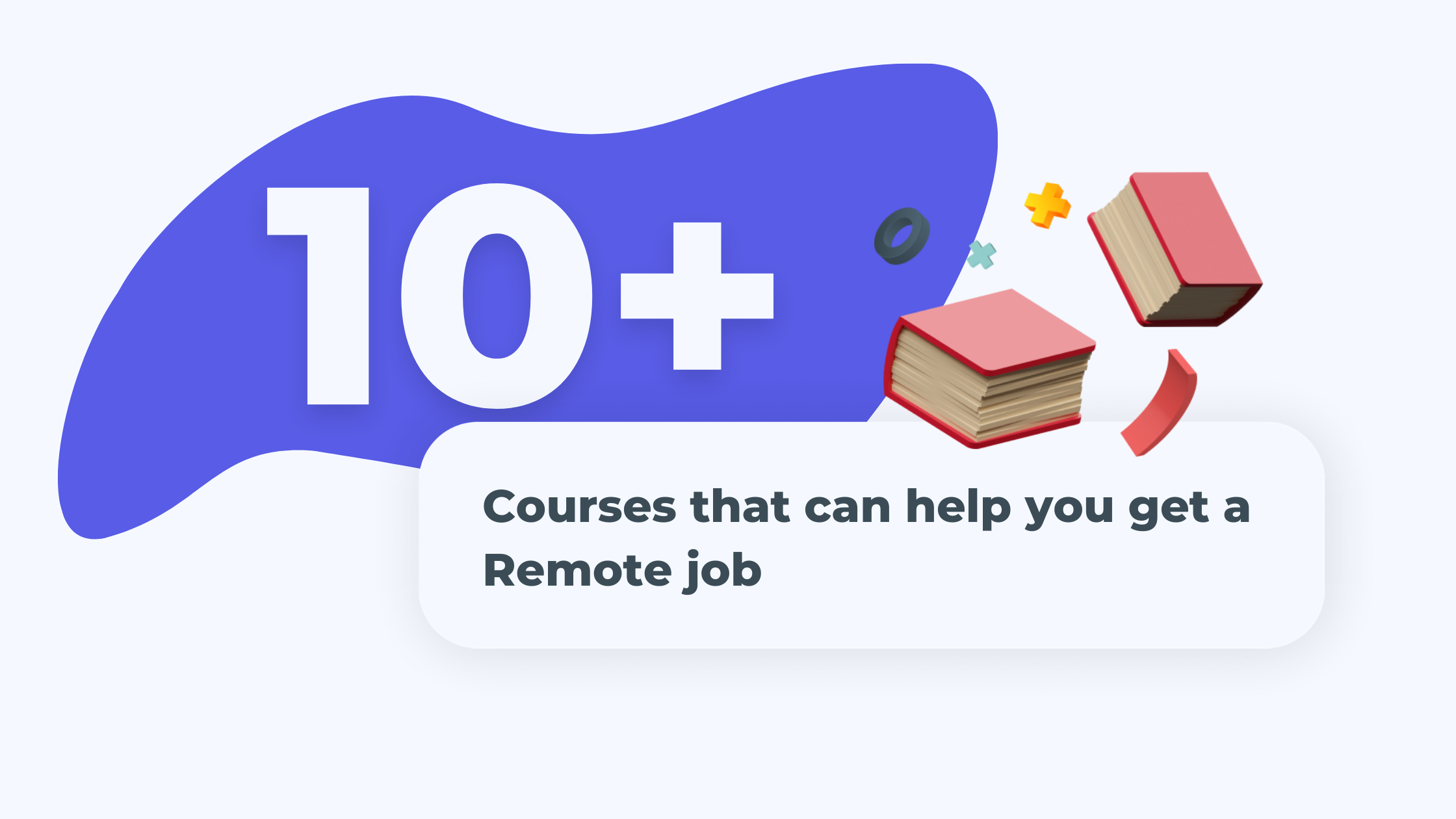Everyone and anyone who hasn’t been hiding under a rock for the past few years is familiar with the term remote work. Hence, we’re all more than aware of the need to hire remotely. Teams that work from home and communicate with their mates online know the meaning of asynchronous communication. Still, there’s another term the internet cleverly labeled as “what the hell.” It’s asynchronous hiring, and it’s, in fact, fantastic!
Why should you know about it? Moreover, why should you implement it? First of all, remote hiring will ease your life – and your processes. Do it correctly & you’ll score big time! Wondering how? Let’s take it step by step.
So, What the Hell Is Asynchronous Hiring?
The term sounds a bit intimidating, to be honest. However, when we review all the advantages of remote over on-site work, we can’t help but get intrigued by hiring remotely. Now, what the heck is this new practice? What does an asynchronous hiring process look like? In a nutshell – it includes pre-recorded video interviews, chatting dissimilar to real-time chatting, take-home tests, and later feedback. Why do it? Well, we’ll cover it in more detail. But first and foremost, this hiring method saves a lot of time and improves the whole recruitment process by easing the steps that follow. Plus, it’s more flexible. Feeling positive about implementing it yet?
Grasp the Perks of Asynchronous Communication
We’re used to chatting through multiple channels. Regardless of whether we do it for business purposes or exchange memes and info with our friends, we’re online – a lot. So what’s the difference, and why is asynchronous communication more effective when it comes to hiring? Here’s the whole drill:
Firstly, you should know that asynchronous communication is separated from real-time communication. It doesn’t require the recipient’s instant answer. That way, it allows them to reply when they are ready and available, rather than answering straight away.
Now, let’s get to the next point. The list of its main benefits over real-time communication like phone calls and video meetings include:
- Simplified interaction and teamwork across various time zones,
- More meticulous planning, extra flexibility, and power to direct the scope of work,
- Quick access to documentation that can be referenced continually.
The bottom line is – you’d get thought out and high-grade communication instead of hurried or impulsive replies.
How to Implement this Hiring Process Successfully?
Each successful hiring process requires establishing a certain structure. By taking good care of it (and reviewing the outcomes every once in a while), you can obtain excellent results. It’s not just about those you’ll be welcoming aboard. There’s also a matter of turning candidates into brand ambassadors. And they’ll undoubtedly take the whole process and all impressions into account.
If you’re determined to nail this remote hiring trend, make sure to stick with these patterns:
- Create a precise flow and know which steps your candidates will go through,
- Choose the skillsets you will search for and run the interviews accordingly,
- Optimize the entire experience by pre-recording some of the essential information regarding the company’s culture, mission, and vision,
- Communicate regularly and avoid delays when responding or sending feedback,
- Reduce the usage of outdated toolkits and use only the recruitment tools that match your precise needs.
Follow these steps, and you will undoubtedly see positive results quickly. Your newly established procedure will work out sleekly.
The Benefits of Asynchronous Interview & Hiring
Out of all the advantages this practice offers, perhaps the most significant one affects the company’s heterogeneousness. It helps employers promote more diverse environments by reducing bias in the interviews and other parts of the process. How so? Let’s start from the top.
Step one: sending your opening interview video to all potential candidates. You’ll send them the same set of questions with the same tone and vibe. Hence, everyone is on an equal initial stage. We know how lively and improvised interviews can get. Is that a good thing? It often is – more spontaneous screenings often drive better results and excellent candidate experience. However, it can also trigger some stereotypes and bring out the bad mojo. So, when it comes to the initial screening, the asynchronous method wins by far.
Later on, this sort of hiring will grant more transparency. You can go back and double-check the responses, share them with other recruiters, hiring managers, and anyone involved.
Lastly, it helps companies that hire remote and flexible talents overcome time-zone barriers. Different zones mean more coverage in many lines of work, from customer support to remote development teams from multiple areas. Nevertheless, their schedules can pose an issue when you’re trying to book a meeting. Wanna solve this problem smoothly? Go for pre-recorded interviews and take-home tasks.
So, to wrap this section up – you will save time, be more professional, reduce bias, hire more diversely, gain more coverage, be more flexible, and access a massive pool of skilled professionals.
The Best Asynchronous Interview Tips [for Candidates & Interviewers]
Conducting a one-way interview can help you a lot. Still, before embracing this simplified method, it’s imperative that you understand how it should play out. Although all companies have different goals in mind (and recruitment and interviewing aren’t excluded from these differences), some steps should always be taken. Start with the basics:
- Check and double-check your equipment before you commence,
- Take care of your surroundings and light in the room,
- Place camera in the eye level,
- Dress professionally.
Then, this one’s for all the candidates who’re about to participate in a remote interviewing process: read the instructions carefully. Be sure to know what the potential employer expects from the screening. Learn whether there’s a time limit for your answers and figure out whether you can do a retake and modify your answers.
As for the interviewers, make sure that the ground rules and expectations are crystal clear to each potential hire.
What Are Asynchronous Interview Questions?
The questions companies ask throughout remote interviews aren’t that different from those in the good ol’ fashioned real-time screenings. These sets can cover multiple topics. The first lines often involve trying to learn the basics about a candidate, like previous (most relevant) experience in short, the interest in the company, and other general questions. Then, they’ll gradually move toward more specific subjects and technical experiences.
Asynchronous processes usually encompass take-home assignments. These are considered the best way to find out about someone’s coding, testing, problem-solving, leadership, project management skills, and more.
More New HR and Recruitment Trends and Practices You Should Know of
Attracting top talent and making a memorable impression require some extra effort. Still, recruiting and talent acquisition strategies are evolving daily. There are quite a few positive impacts that have found a way to enter hiring processes and simplify them. You can guess it – technology is the main reason recruitment has shifted to an entirely new level. Here’s what to explore:
- Using tech tools, AI, and chatbots,
- Focusing on data and analytics,
- Tracking progress and minding relevant metrics,
- Embracing retention-focused hiring by enhancing culture and employee development,
- Including more flexibility and transparency in the processes,
- Taking care of candidate relationship management and selecting software to help you,
- Being even more careful with data protection while hiring and working remotely.
Try these new trends out. By doing so, your odds of overcoming familiar hiring struggles might increase.
Do You Just Love Asynchronous Hiring or What?
Most traditional tips to improve a recruitment process will unquestionably do the trick. Nevertheless, trying out brand-new tactics and thinking outside the box work miracles. Setting up an asynchronous hiring process is a good place to start if you’re seeking innovation and fresh methods. More importantly, this approach combines the best aspects of one-way interviews and grants overall enhancement.
So, while you shift your screenings toward this change?




